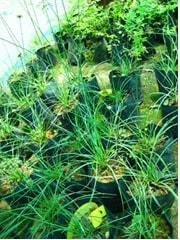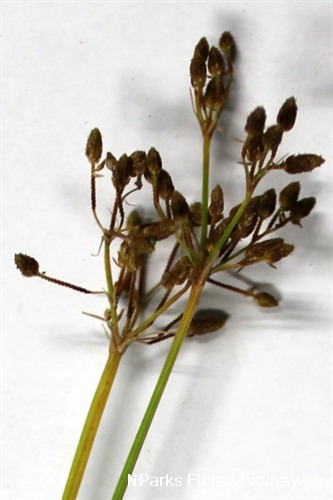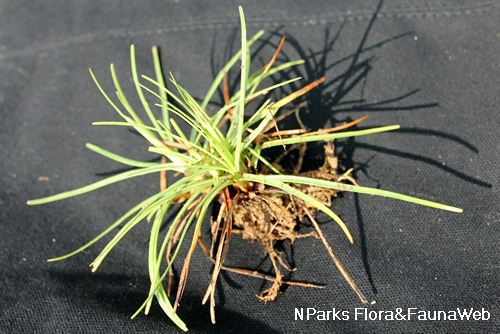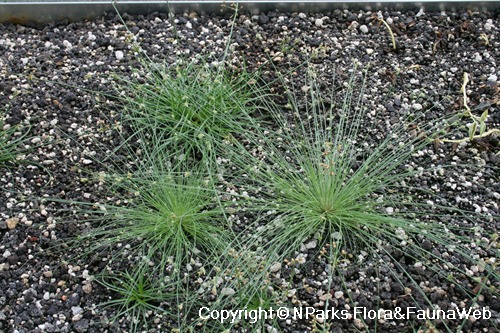
Back
Fimbristylis tetragona R.Br.
| Family Name: | Cyperaceae |
| Synonyms: | Scirpus tetragonus, Fimbristylis cylindrocarpa |
| Common Name: | 四棱飘拂草 |
Name
Classifications and Characteristics
| Plant Growth Form | Grass or Grass-like Plant (Short Grass (Poaceae)) |
|---|---|
| Lifespan (in Singapore) | Annual |
| Plant Shape | Grassy |
| Maximum Height | 18 cm to 50 cm |
Biogeography
| Native Distribution | Tropical and Subtropical Asia, Northern Australia |
|---|
Description and Ethnobotany
| Growth Form | Annual or short-lived perennial herbaceous plant. |
|---|---|
| Foliage | The leaves lack a leaf blade. At the base of of the stem, there are a few leaf sheaths with brown, membrane-like margins. |
| Stems | The light bluish green stems (technically known as culms) are smooth, 4-sided and occur in dense clumps. |
| Flowers | The oval to ellipsoid inflorescence occurs singly at the tip of the culm. The apex or tip of the inflorescence is rounded or obtuse (not sharply pointed, but wide-angled). |
| Fruit | Fruits are light brown, narrowly oblong nutlets (2.5 mm long). Each nutlet is attached to a ~0.7 mm stalk-like stipe. |
| Habitat | This is a common and widespread species that occurs in marshes, near ponds, streams and rivers, as well as drains and ditches. Found at altitudes up to 1000 m. |
| Etymology | The specific epithet 'tetragona' comes from the Greek 'tetra' meaning four and 'gona' meaning 'angled'. It refers to the 4-sided culms. |
Plant Care and Propagation
| Light Preference | Full Sun |
|---|---|
| Water Preference | Lots of Water |
Fruit, Seed and Spore
| Fruit Classification | Simple Fruit |
|---|---|
| Fruit Type | Indehiscent Dry Fruit , Nut / Nutlet |
Image Repository
Others
| Master ID | 31111 |
|---|---|
| Species ID | 5502 |
| Flora Disclaimer | The information in this website has been compiled from reliable sources, such as reference works on medicinal plants. It is not a substitute for medical advice or treatment and NParks does not purport to provide any medical advice. Readers should always consult his/her physician before using or consuming a plant for medicinal purposes. |





